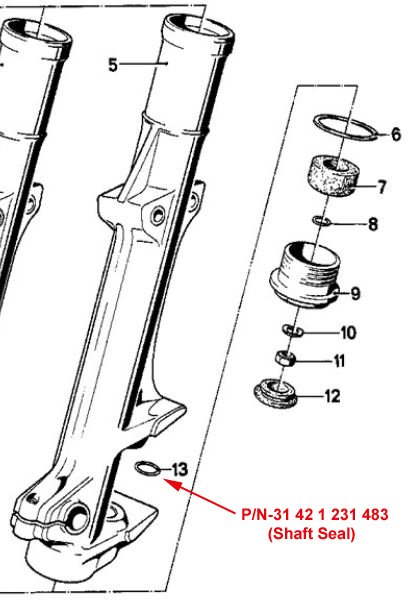nevadaslim
New member
I have a 1980 R100/T bike, I'm currently rebuilding the front forks.
I've got all of the parts I think I need but found one part on the micro-fiche that I just can't figure out where it goes.
See photo item #13. P/N-31 42 1 231 483 Shaft Seal. What shaft?
Any ideas where this o-ring goes? I know it looks like the brake caliber pivot-bolt o-ring, but it's not, different P/N.
Any help would be greatly appreciated, I've spent hours trying to figure out this part.
Mike...
I've got all of the parts I think I need but found one part on the micro-fiche that I just can't figure out where it goes.
See photo item #13. P/N-31 42 1 231 483 Shaft Seal. What shaft?
Any ideas where this o-ring goes? I know it looks like the brake caliber pivot-bolt o-ring, but it's not, different P/N.
Any help would be greatly appreciated, I've spent hours trying to figure out this part.
Mike...
Attachments
Last edited:


